Sunday 19th March to Monday 10th April 2017
The days of being able to anchor in an isolated bay in the Galápagos and take a dinghy ashore to explore are long gone. Now tourism on the islands is strictly regulated with a view to conserving the environment, preventing the introduction of further invasive species that will compete with or harm the endemic ones, and maximising income from tourists. As a yacht it is not cheap to visit and you are limited to anchoring in a designated bay on either one or up to three islands only. We get the impression that yachts are not particularly welcome but decided that, since it was a once in a lifetime opportunity, we would apply for an Autografo, the option that would permit us to anchor on three different islands, but at not inconsiderable expense. The cost and hassle involved are deterring a lot of cruisers from stopping here en route to the South Pacific islands.
So far we have spent ten days on San Cristóbal and twelve days on Santa Cruz Island. We plan to have another week on Isabela, the largest and supposedly most interesting island in the archipelago before heading off across the Pacific.
Four hours after we arrived in the Galápagos we were visited by the Port Captain, Immigration, Public Health and National Park representatives and various forms were filled in, our lockers inspected for insect life, our fumigation certificate checked and passports stamped. With Gian-Carlos and Carmela from the agency we had appointed to represent us on the Galápagos as well, there were nine people crowded onto Vega plus a diver underneath inspecting our bottom. He pronounced it completely clean (it was fortunate that one of the water taxi drivers had pointed out to us, when we arrived, the weed growing profusely on our hull, so we’d had an hour for the three of us to dive down and scrape off the growth that had accumulated in just over two weeks since Vega was pressure cleaned in Panama). Tom left us the next day to meet up with his wife Jane to explore some of the islands, although they joined us later in the week for a night and to do a trip round San Cristóbal. A few days later friends Ian and Steph arrived on Nautilus and we shared many excursions with them.
It’s not how I imagined it here. I’d thought it would be all barren volcanic islands with only the occasional cactus hanging on for dear life. Baby marine iguanas having the life crushed out of them by hoards of vicious snakes. The occasional blue footed booby trying to escape from tourists with zoom lenses. Instead there’s plenty of green vegetation: on the higher islands like San Cristóbal, Santa Cruz and Isabela the vegetation changes from arid semi-desert lower down, with cacti and lichen abounding, to surprisingly verdant forest higher up.
Puerto Ayora on Santa Cruz, the largest town in the Galápagos, has noisy bars, smart hotels and streets full of tour and gift shops. No sign of David Attenborough anywhere yet.
Most wonderful are the remarkably unafraid animals. It’s possible to do a lot here without going on expensive tours and so far we have seen red and blue footed boobies, Darwin’s finches, frigate birds, marine iguanas and giant tortoises. We have been scuba diving with hammerhead and Galápagos sharks, eagle rays and turtles, as well as huge schools of fish. We have walked along the coast and snorkelled from different beaches, and taken taxis to look at an inland freshwater lagoon on San Cristóbal, tortoise breeding centres and lava tunnels. You don’t have to go far to meet Galápagos creatures. On a walk down Avenida Charles Darwin, the main street along the seafront in Santa Cruz, there are marine iguanas sunbathing on the pavement, red and orange Sally-Lightfoot crabs on the rocks below and at the Fish Market sea lions and pelicans wait expectantly for scraps of fish whilst the tourists photograph them.
There are numerous small black tipped sharks, about two foot in length, swimming around under Vega, and we have seen a school of a hundred or so golden cow-nosed rays swimming around the jetty on San Cristóbal one night.
The Galápagos sea lions are everywhere, particularly in Wreck Bay on San Cristóbal. They lounge around on the dock, snoozing in the sun and sleeping on benches.
They will get up onto boats if they get the chance (most yachts put out netting and fenders to stop them getting on board – it doesn’t always work) and into your dinghy (which is why we catch the water taxi everywhere rather than use the dinghy and return to find it full of sea lions and their calling cards).
They have also perfected the art of sleeping at sea, floating around with flippers in the air.
They are very sociable creatures with a loud barking cry that you hear at night mixing in with music from the bars on shore but despite looking so cute they will snap if you go too near and one chased me along the jetty which Hugh found highly amusing. One even managed to get up onto Vega at 4am and was thumping around on deck until we shooed it off. We did a snorkelling excursion to Santa Fe Island and swam with playful young sea lions, mindful that the bulls could be aggressive and take a bite especially if they think their young are threatened. Their main predators are sharks and killer whales and you can often see the scars some have from encounters with these.
The marine iguanas are found nowhere else in the world and Darwin described them as ‘most disgusting, clumsy Lizards’ and ‘imps of darkness’ and certainly, especially when they snort out seawater through their noses, they are not the most beautiful of creatures, with smashed in faces, beady wide set eyes and spiky, lumpy, often peeling scales. But they are endlessly fascinating as they sit like statues staring imperially out to sea, merging into the black volcanic rocks, or swim through the surf using their strong tails to propel them out through the waves, to feed on underwater algae and seaweed. It is thought that land-dwelling iguanas from South America drifted out to sea millions of years ago, floating here on logs or other debris. This is why reptiles became the dominant land animals here, as few other species could survive two weeks at sea without water or shade.
We walked early one morning to La Loberia Beach on San Cristobal to see the colonies of marine iguanas and then snorkelled in the little sandy sheltered bay where we saw turtles and rays, and schools of yellow tailed surgeonfish in the shallow water. Further out, beyond the protective reef, surfers were waiting for a big wave to ride.
The Galápagos Islands were discovered in 1535 and named ‘ Insulae de Los Galopegos’ – Islands of the Turtles. Giant tortoises are now bred in various centres on the islands, the eggs hatched out in incubators as the young are at risk of being eaten by non-native species such as rats and cats, with feral goats competing for their food. There were 15 subspecies of giant tortoise when Darwin arrived but now there are only 11. They were a convenient food for the sailors, buccaneers and whalers who used the islands as a refuge and safe port from the 16th to 19th centuries, as the tortoises could survive for up to 6 months without eating or drinking due to a slow metabolism and large internal stores of water. Stacked on their backs on board ship they would provide fresh meat at sea. It is estimated that 100,000 tortoises were killed off and they have been a protected species since the 1970s. It is thought that now only about 15,000 tortoises remain. They have an average life span of 100 years and lead an uncomplicated life, feeding on grass, leaves and cactus, basking in the sun and napping for 16 hours a day.
Lonesome George is the most famous of them all, and has become a symbol for conservation efforts in the Galápagos Islands and throughout the world. He was a male Pinta Island tortoise, characterised by a saddleback shell and long neck. George was first found on the island of Pinta in 1971. The island’s vegetation had been devastated by introduced feral goats and George was the sole remaining Pinta tortoise. Relocated for his safety to the Charles Darwin Research Station on Santa Cruz Island, the search began for a mate for George in the world’s zoos. Although he was introduced to two females of a different subspecies who produced eggs, none hatched and sadly no other Pinta tortoises were found. When Lonesome George died in 2012 at the age of around 100 years the world mourned: gone was the last tortoise on that Galapagos island and yet another subspecies was extinct. However more recently a colony of tortoises has been discovered living on Isabela island at the foot of a remote volcano, which have high levels of Pinta Island tortoise DNA blended with the local Isabela Island genes. More than a century ago sailors in the archipelago who hunted the tortoises to near extinction had thrown some from Pinta Island overboard near Isabela Island, which means that somewhere there could be pure bred Pinta tortoises. The world waits with baited breath and in the meantime you can visit Lonesome George who is kept at a carefully controlled temperature of 17 degrees at the Charles Darwin centre.
Then there are the blue footed boobies. I came across this one sitting on a rock off Puerto Chino beach, watching the sea. It was not at all bothered by my taking its photograph. The name ‘booby’ is thought to have come from bobo, the Spanish for ‘clown’, on account of their comical waddle and apparent stupidity and ease of capture.
Hugh was particularly excited to see Darwins finches. As you know, of course, Darwin found finches on the different islands which had each adapted to conditions on that island, in particular with variations in bill shape and size, dependent on food sources available. Although Darwin failed to label his specimens properly and didn’t recognise the birds correctly as different species of finch, he eventually, with the help of other naturalists, recognised the importance of these differences, which formed the basis for his theory of evolution by natural selection.
We went scuba diving on the distinctive Kicker Rock off San Cristóbal island. There were strong currents along the side of the pockmarked underwater rock face where we swam with a school of hundreds of foot-long silvery striped salema fish which formed a dense, dark mass. Above us lurked Galápagos sharks and a green turtle swam between us, inches away. Hugh and I had to surface early but Ian and Steph, staying down for longer, saw hammerhead sharks and rays. Our second day of diving the following week was on Gordon Rock near to Santa Cruz Island where we had two astonishing dives – hammerhead sharks were only feet away, three white tipped sharks performed an elegant dance interweaving in the current, four spotted eagle rays glided gracefully by, a green turtle swam right up to look at us, schools of colourful yellow tailed surgeonfish passed by. We surfaced with reluctance when our air got low, feeling exhilarated.
We had to buy plastic ponchos as it rained heavily and unexpectedly when we visited the Rancho Primicias tourist reserve, up in the highlands of Santa Cruz, where giant turtles wander freely. The wellington boots were included in the $3 entrance price.
The Galápagos are volcanic islands which first surfaced above sea-level between 3 to 4 million years ago and Wolf Volcano on Isabela island last erupted in May 2015. The lava tunnels in the Santa Cruz highlands, which are almost 1km in length, were formed when the outside skin of a molten-lava flow solidified. When the lava flow ceased, the molten lava inside the flow kept going, emptying out of the solidified skin and thus leaving tunnels. They have impressively high roofs, the walls streaked gold in the camera flash, but towards the end of the tunnel the roof dropped in height and we had to crawl, commando style, under a ledge less than two foot high, getting very muddy in the process.
We plan to move on tomorrow to Isabela, some 40nm west, if Hugh manages to fix a loose bolt holding the propellor shaft to the engine. So more, I hope, about the fascinating Galápagos soon if we can find reasonable wifi on the island.
In the meantime there are worst places to be stranded than Puerto Ayora.

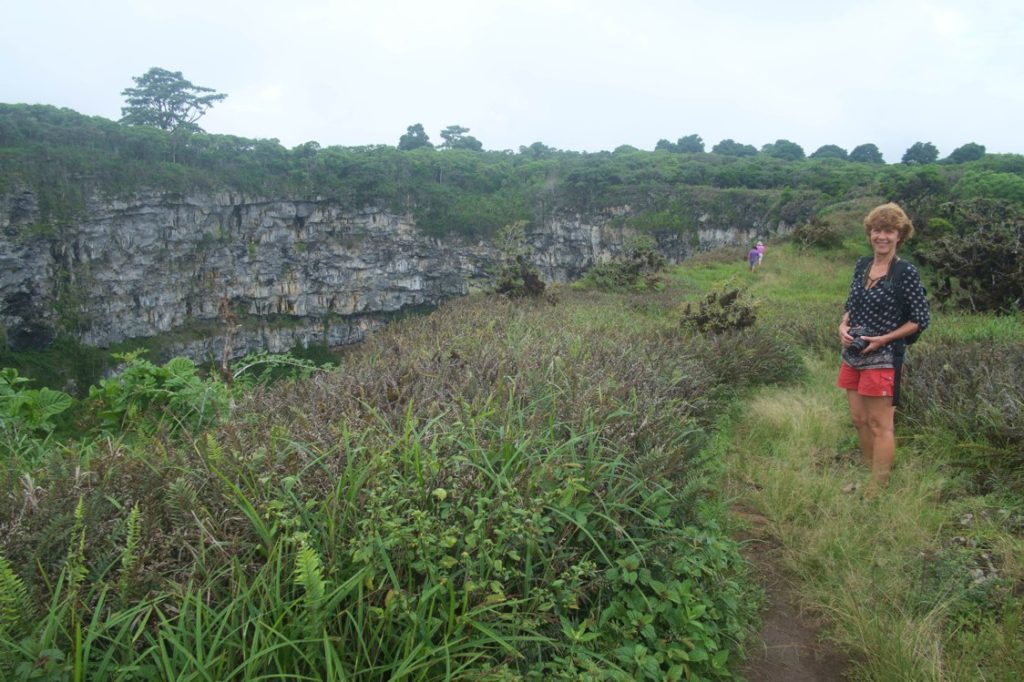
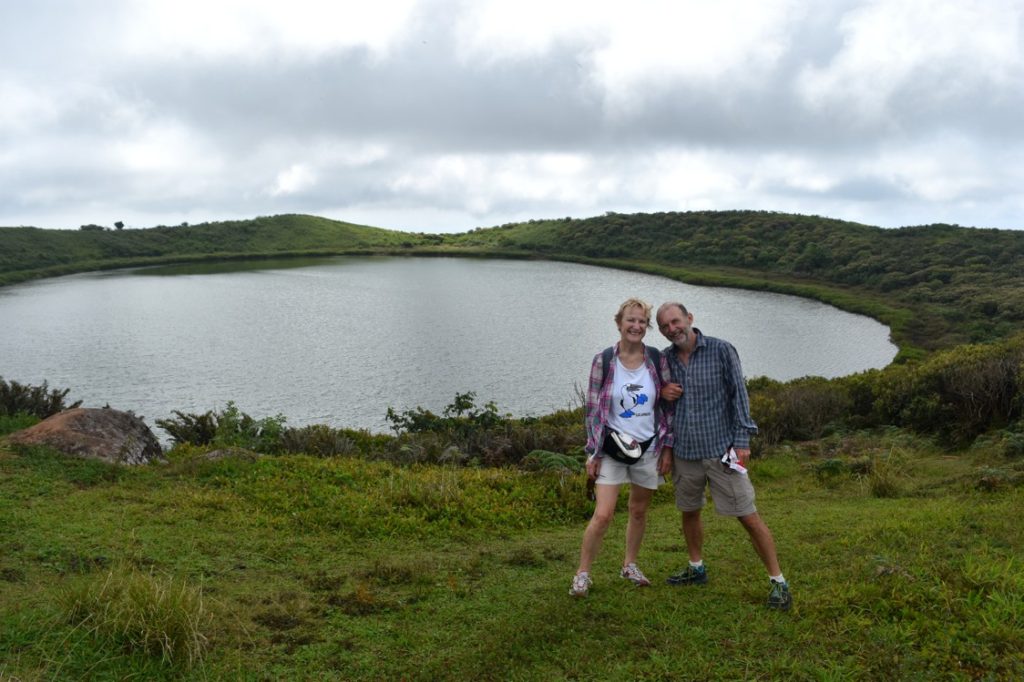
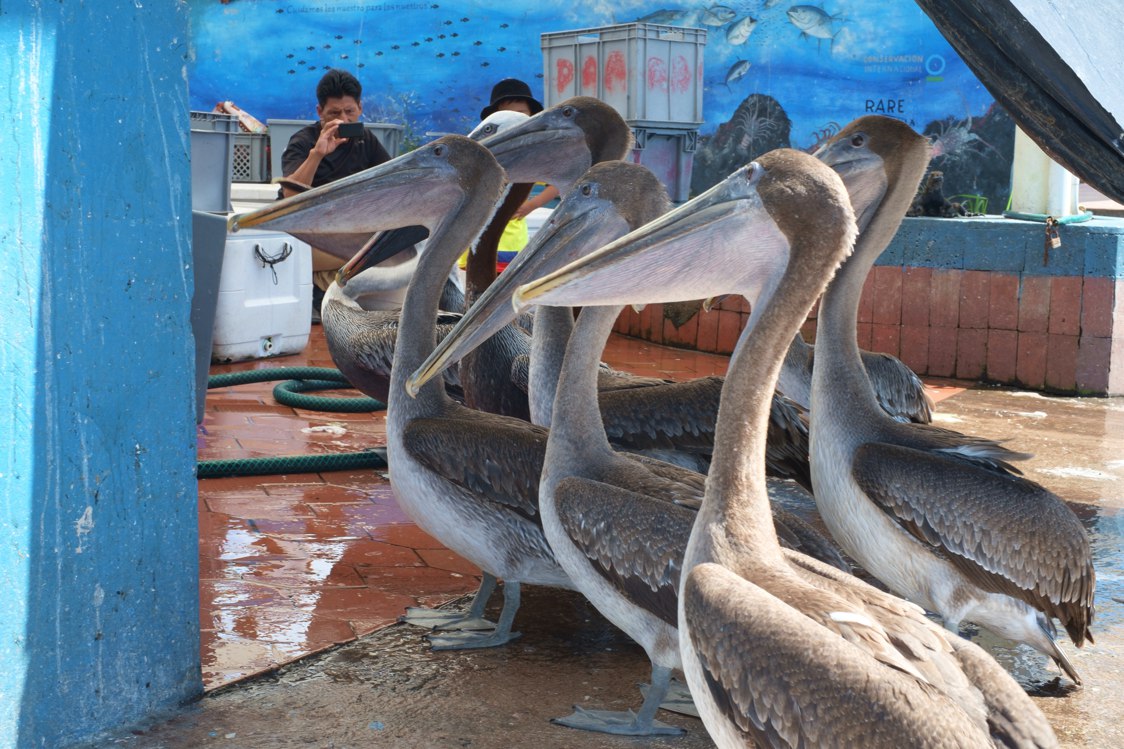
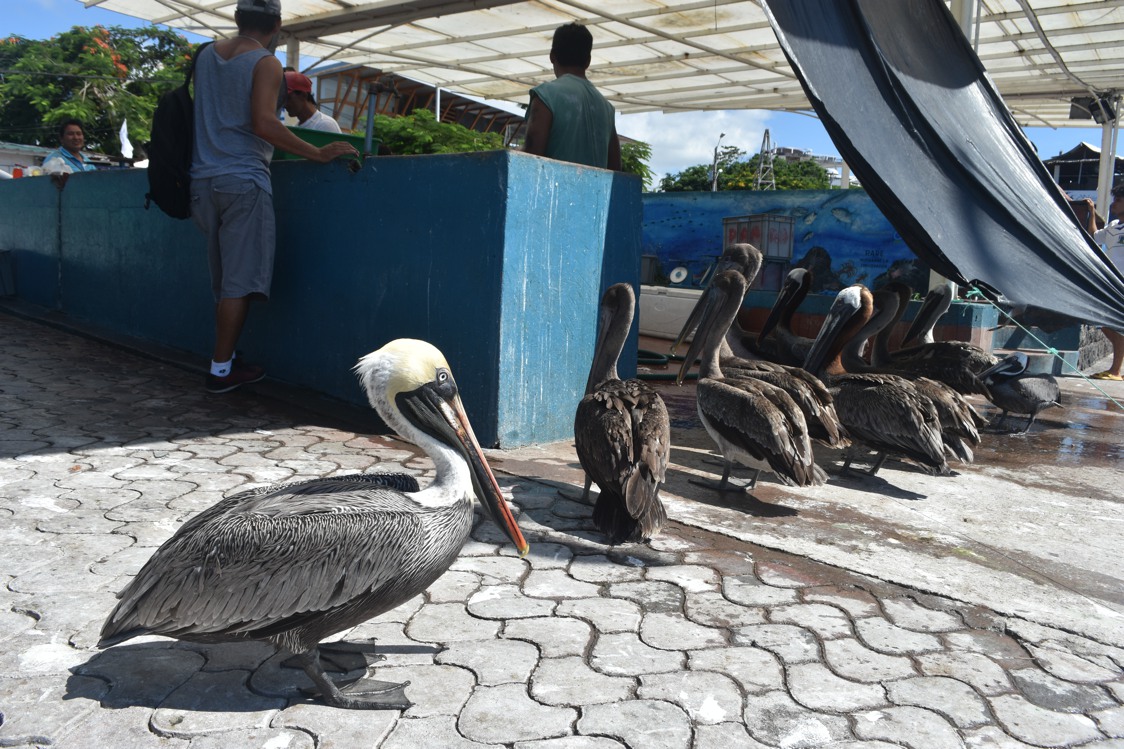
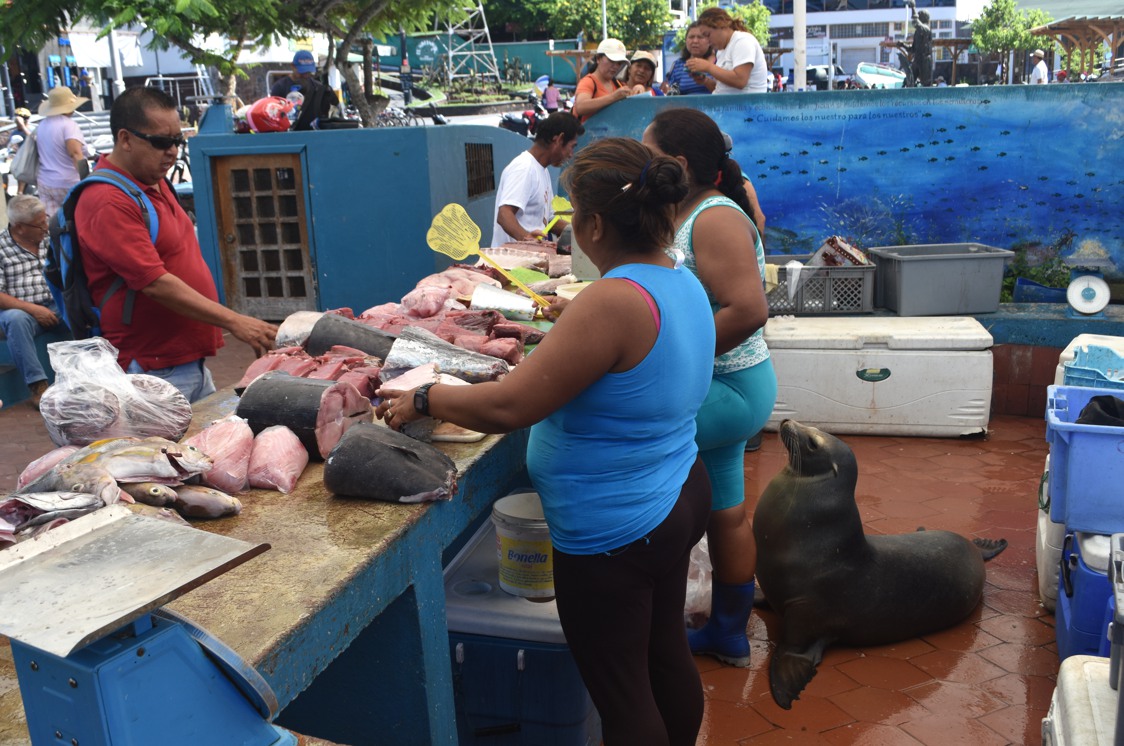
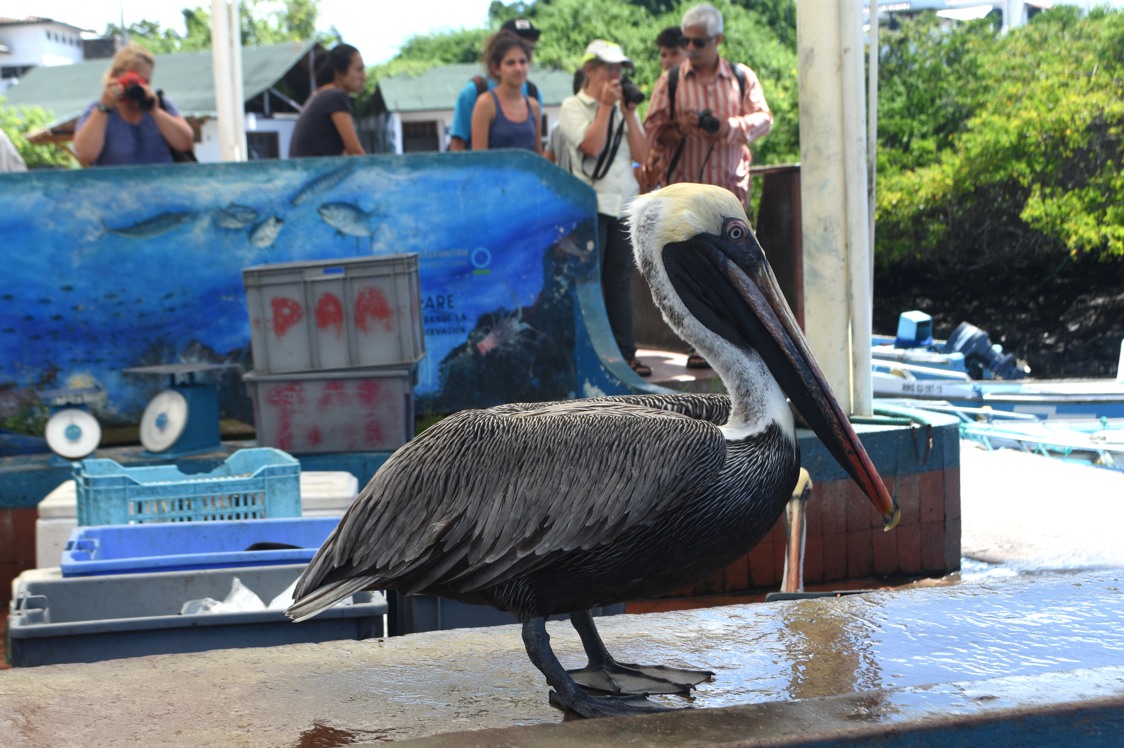
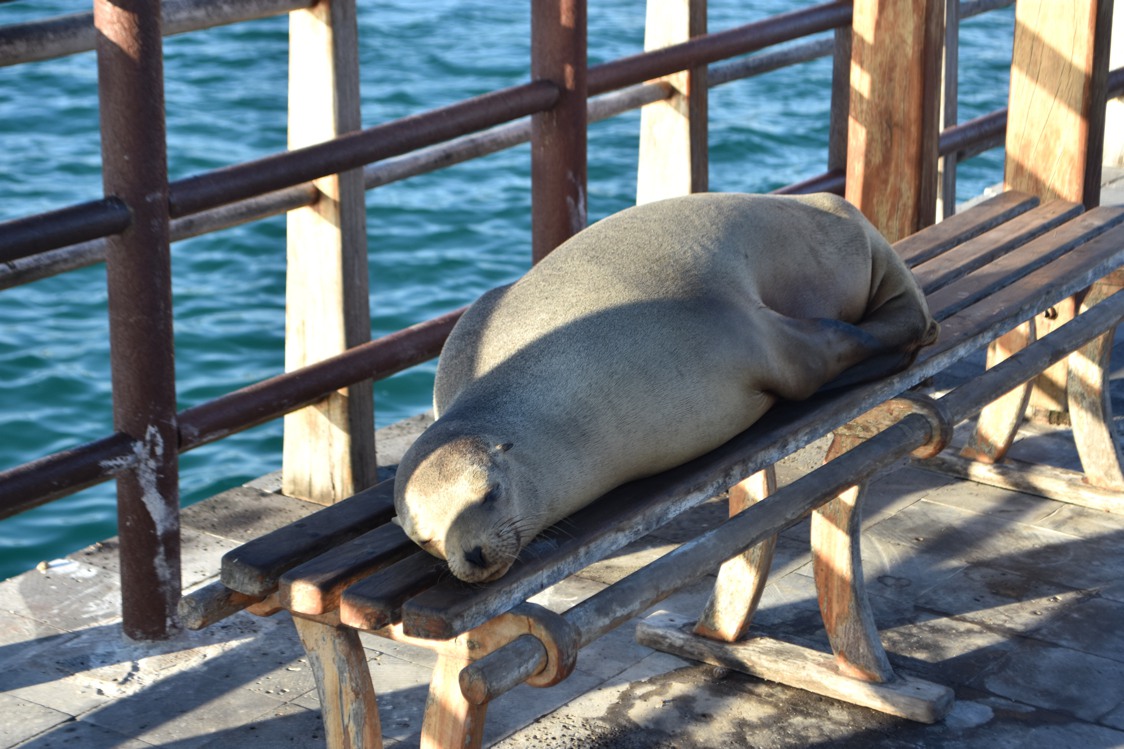

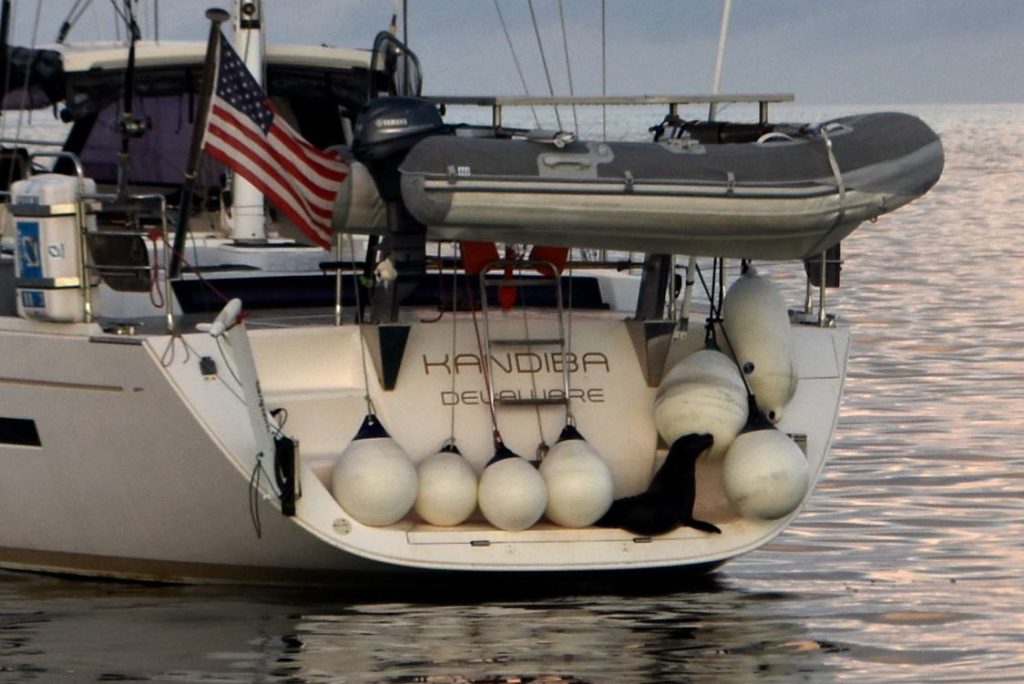
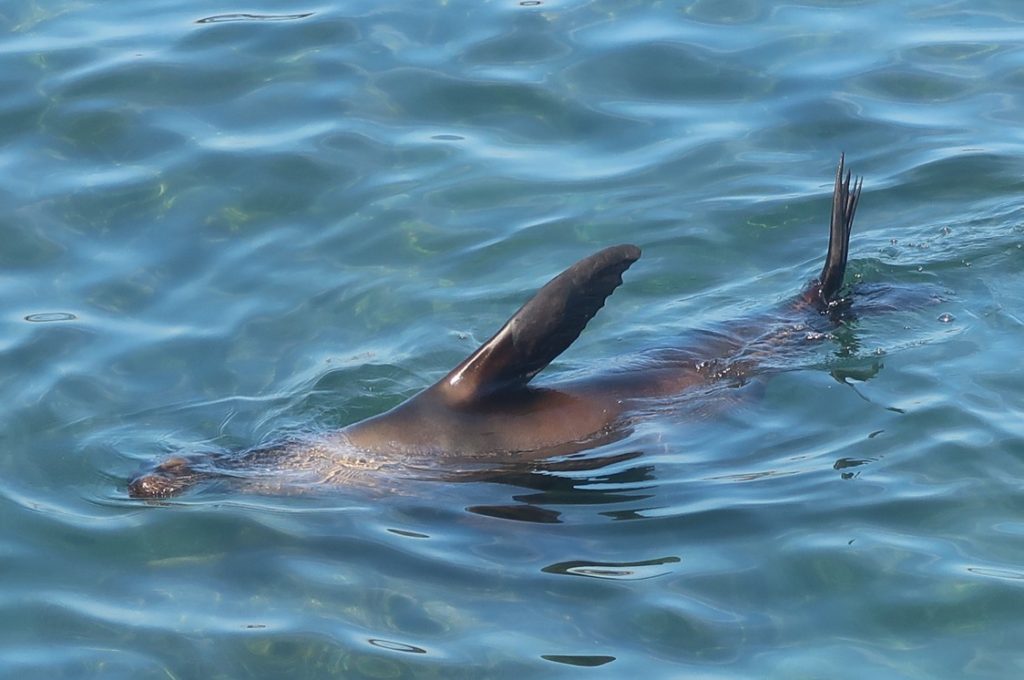
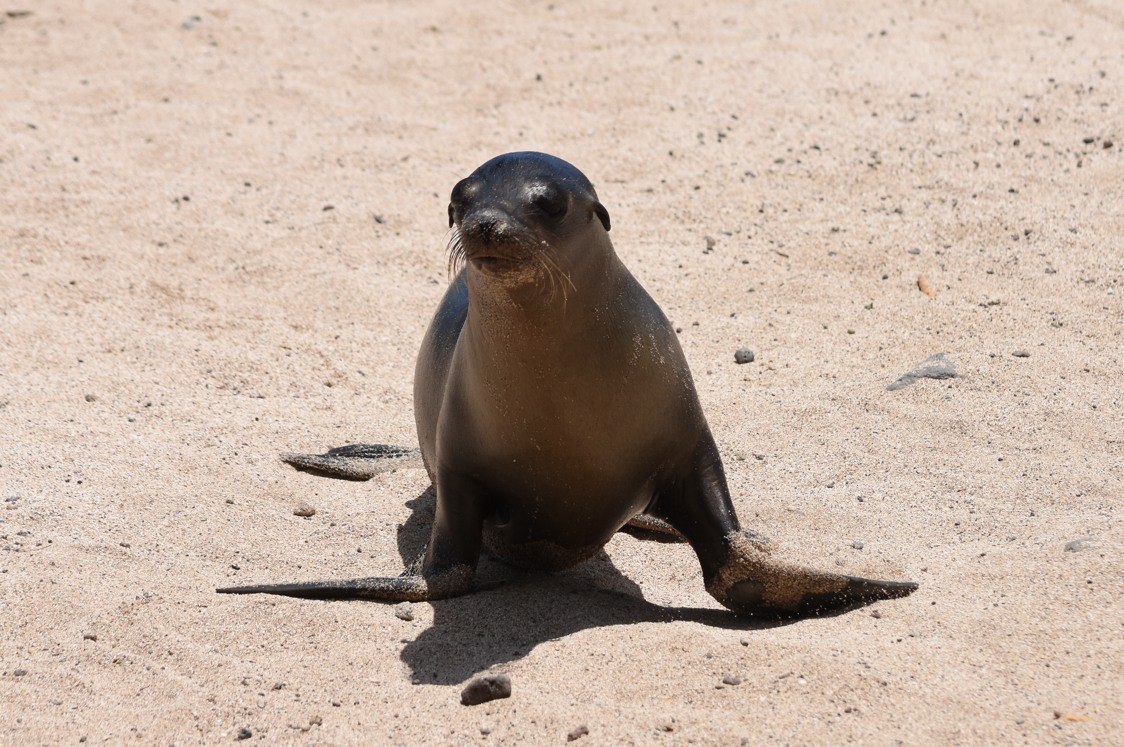
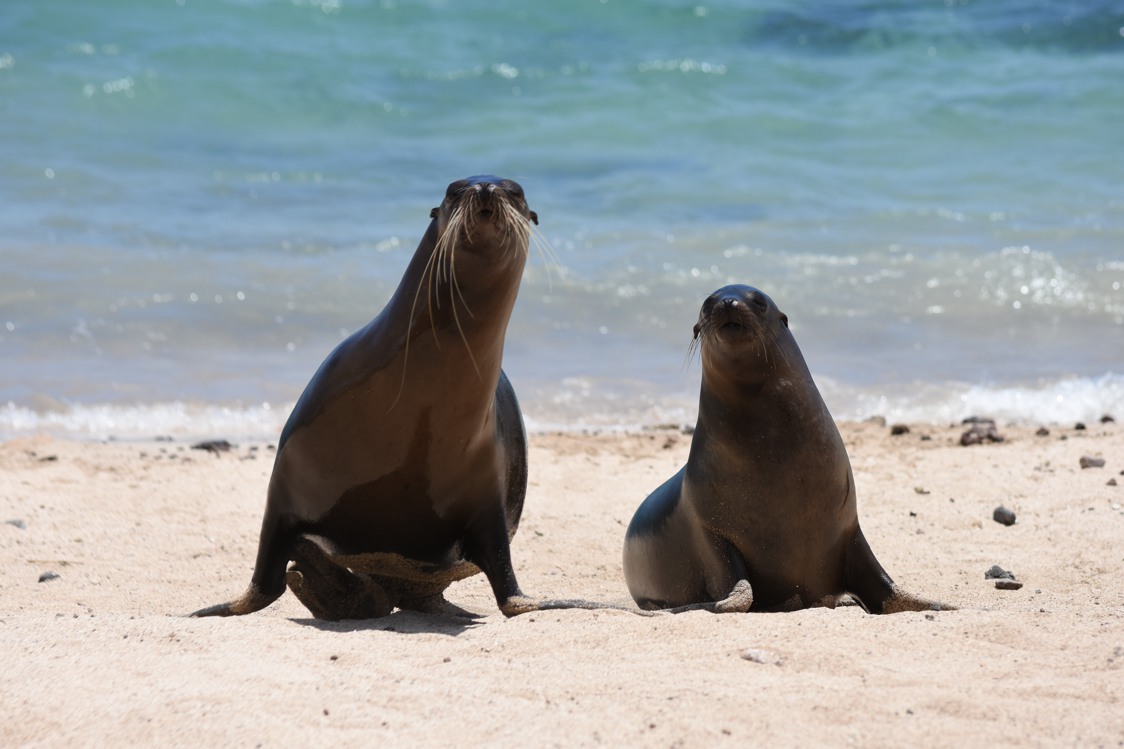
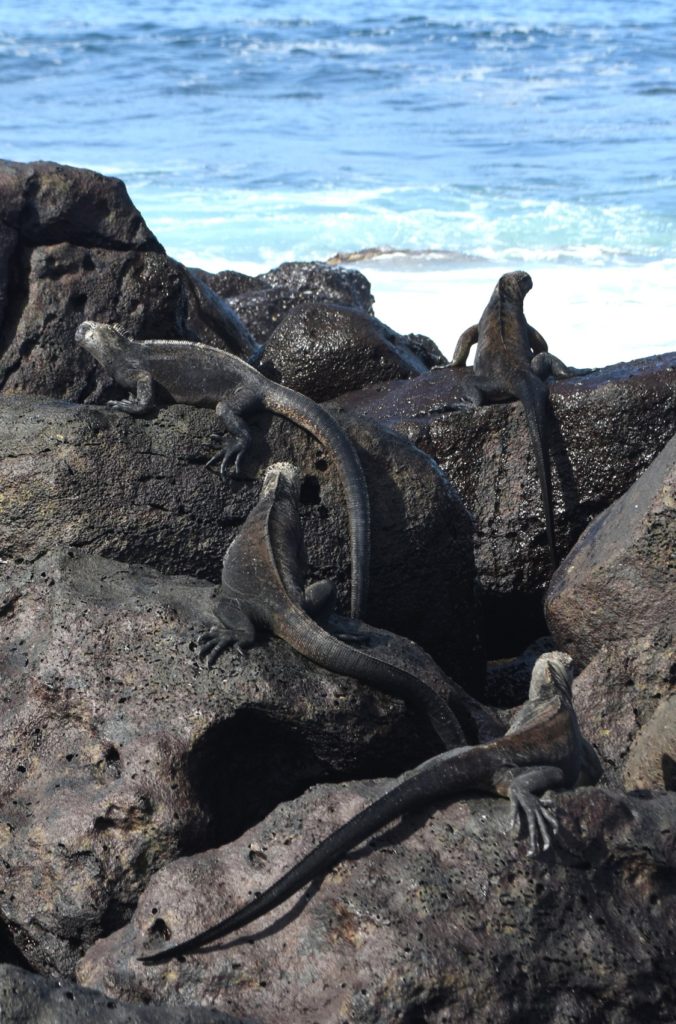

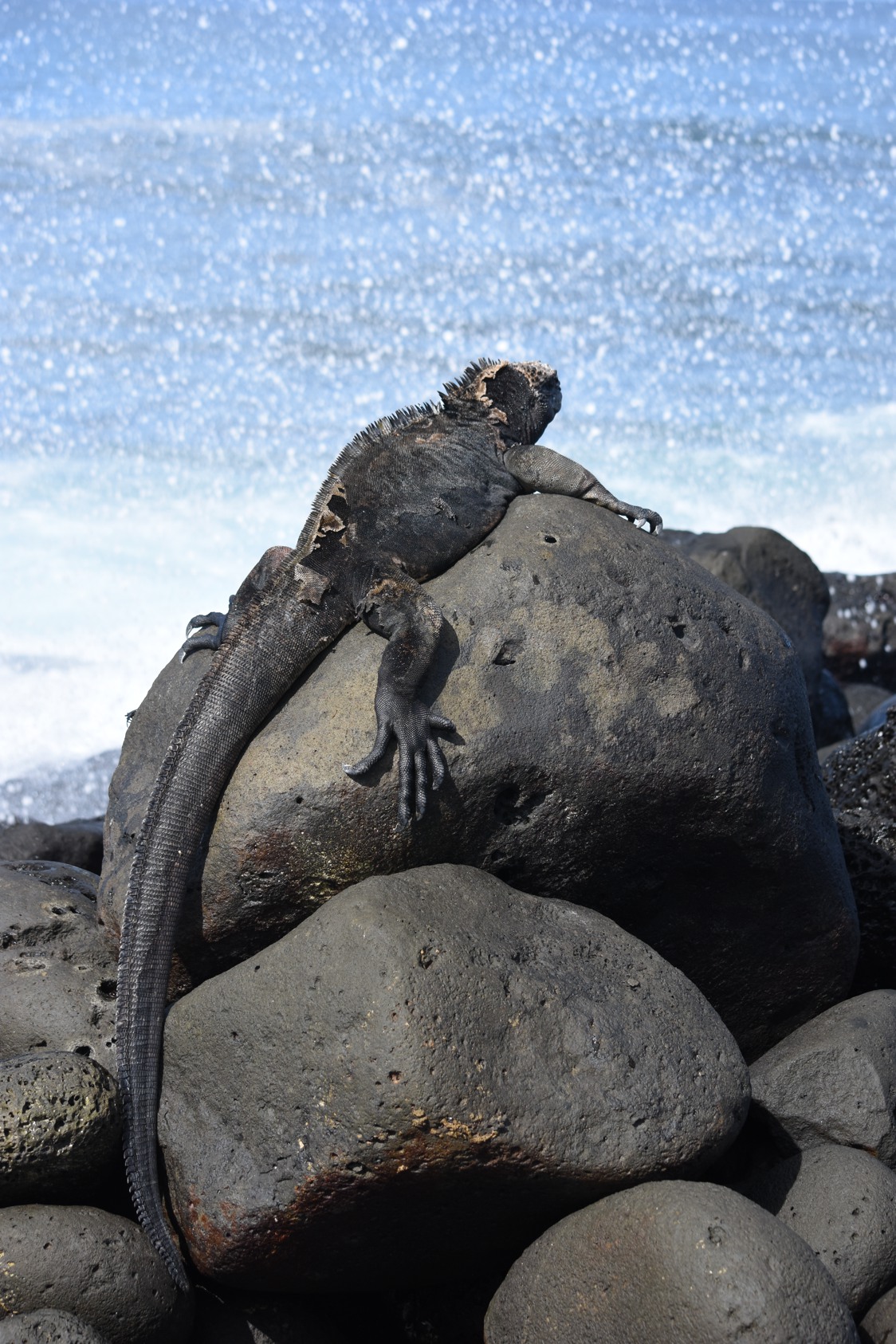
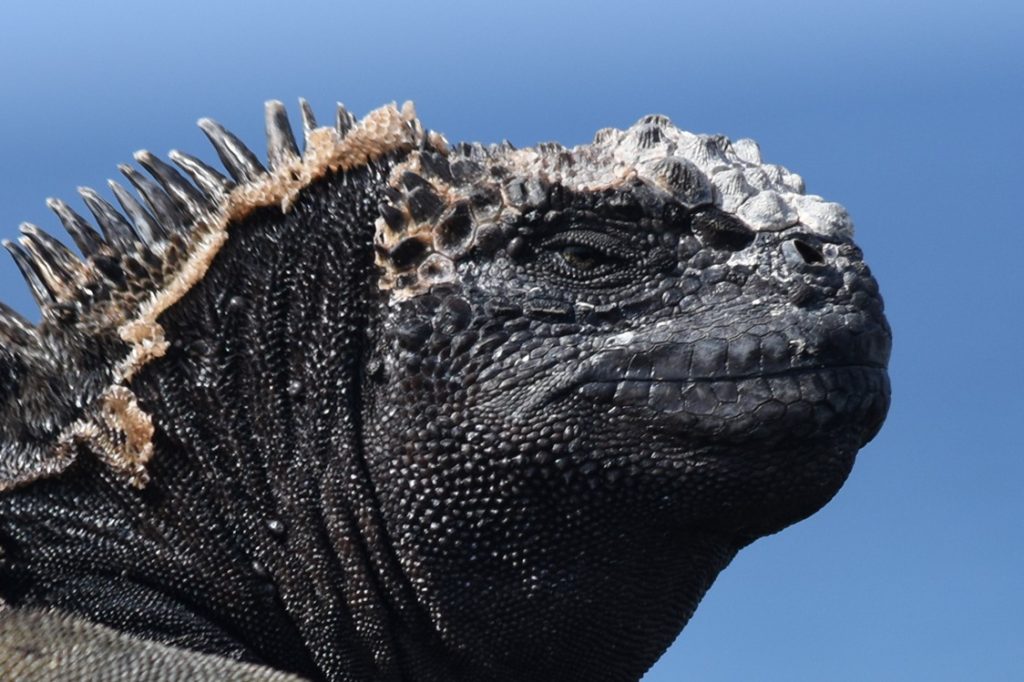
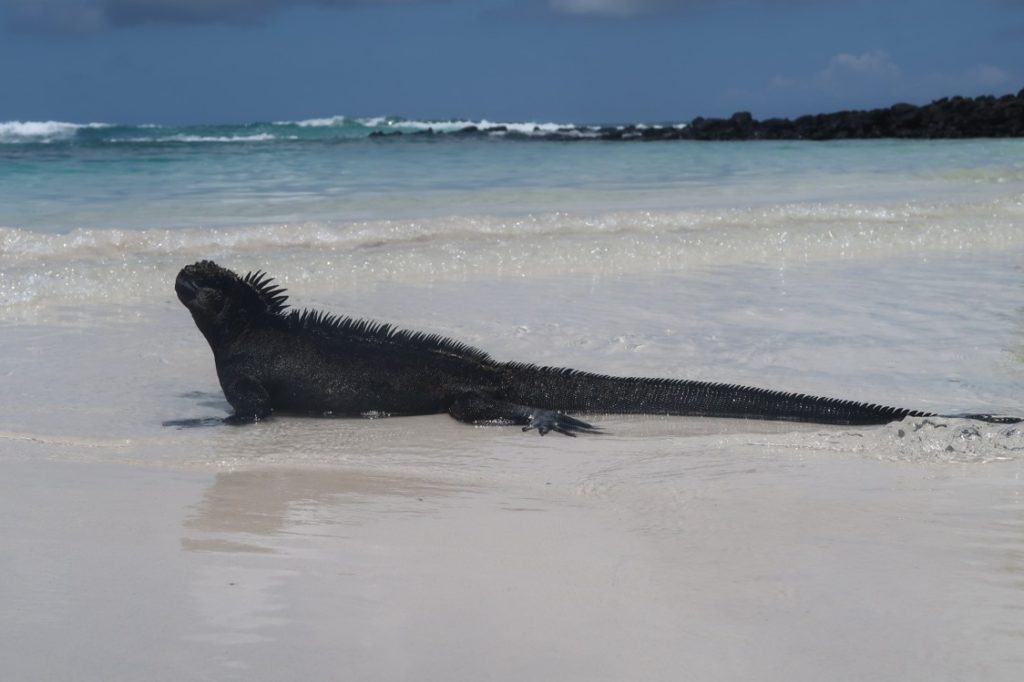
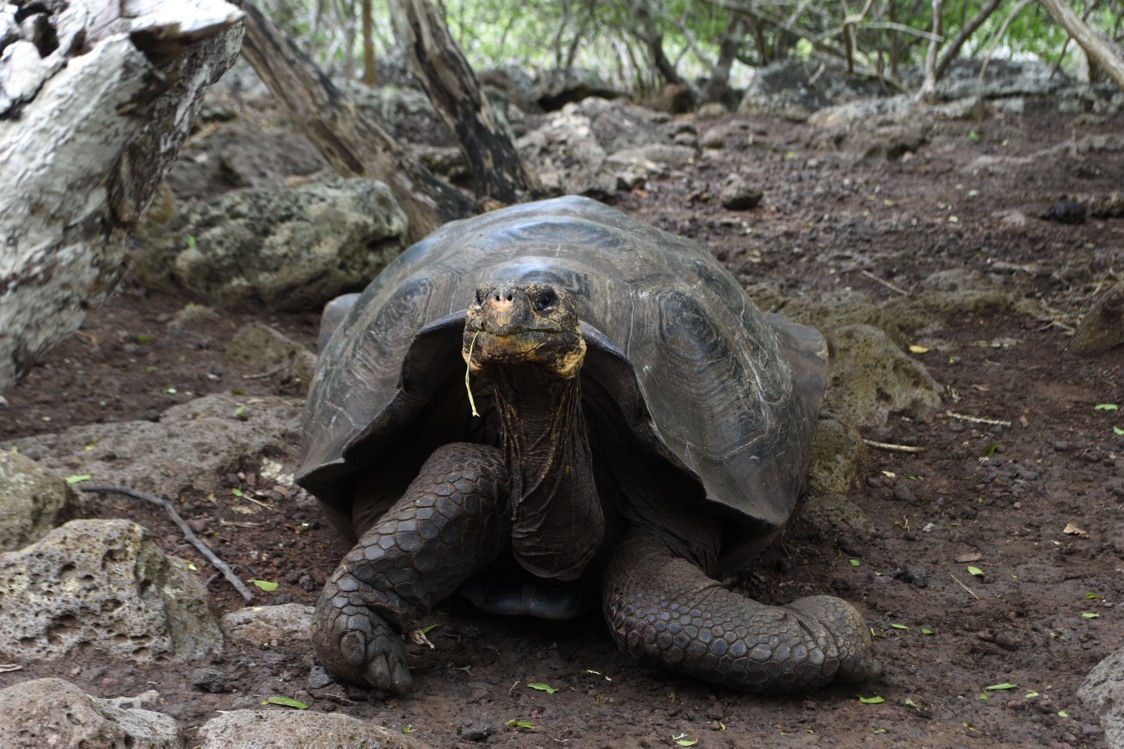
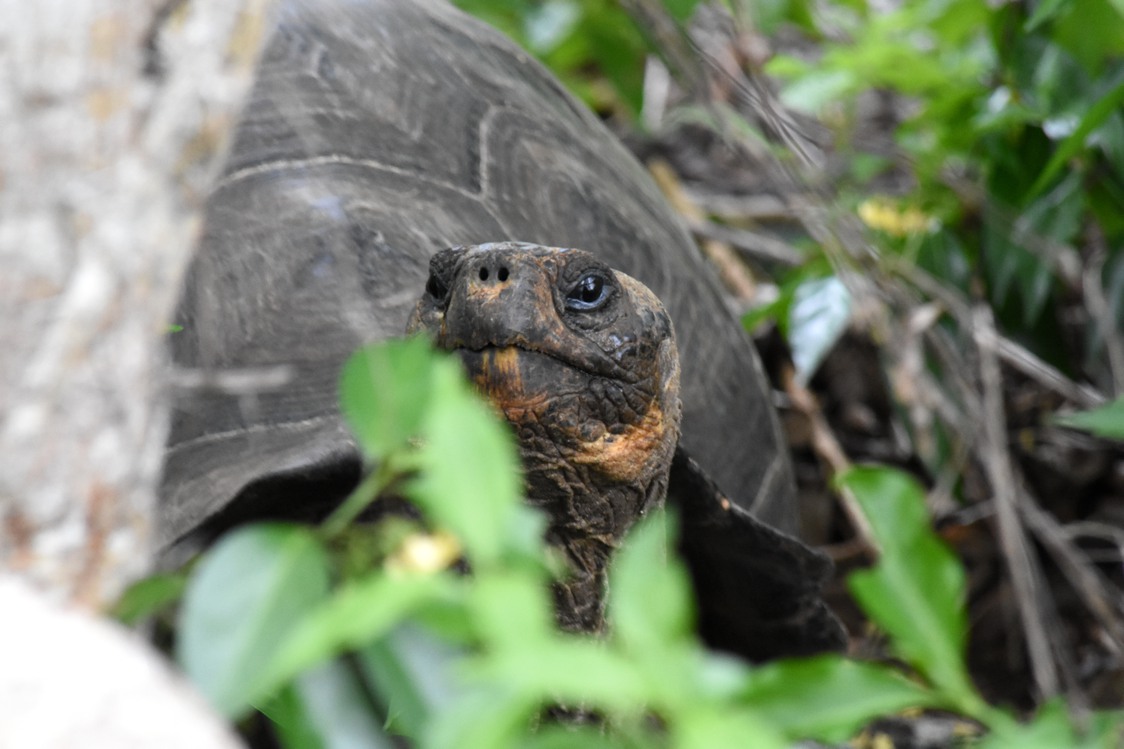
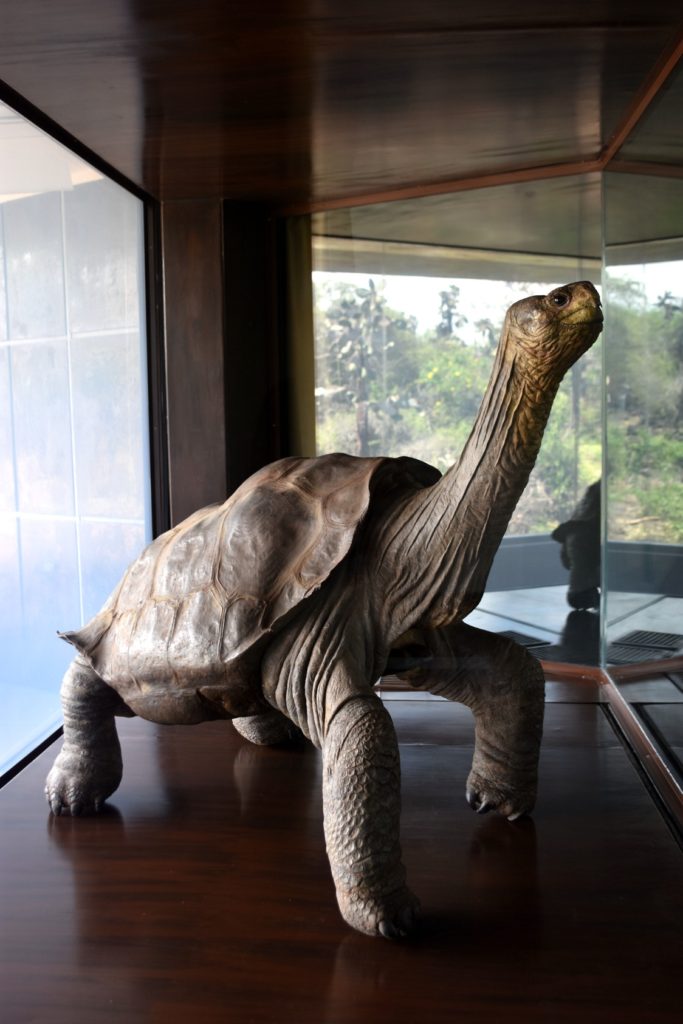
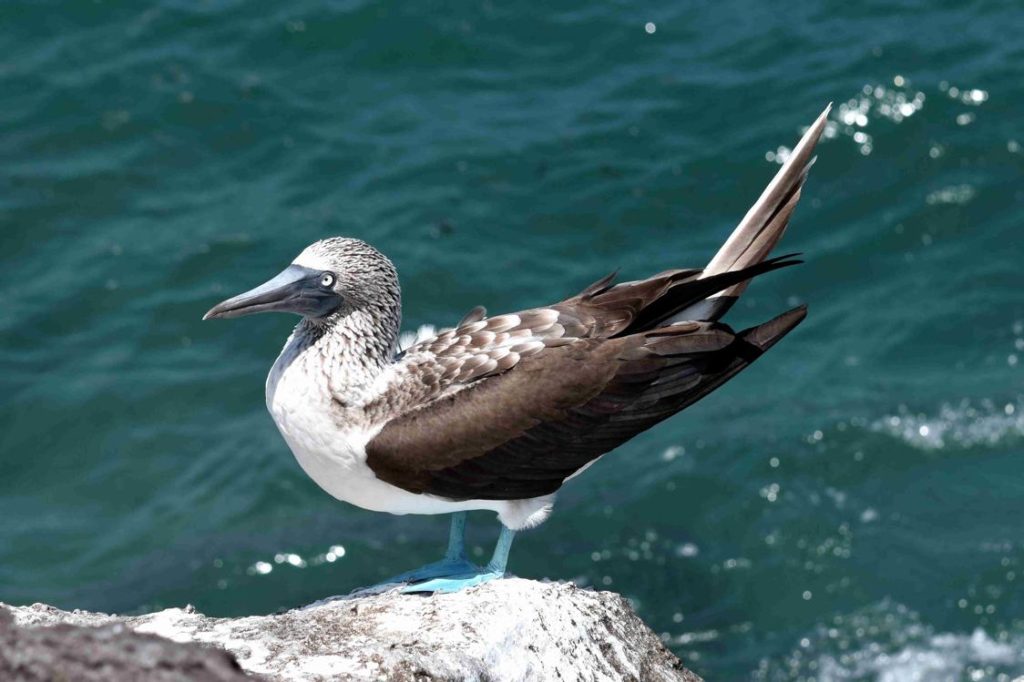
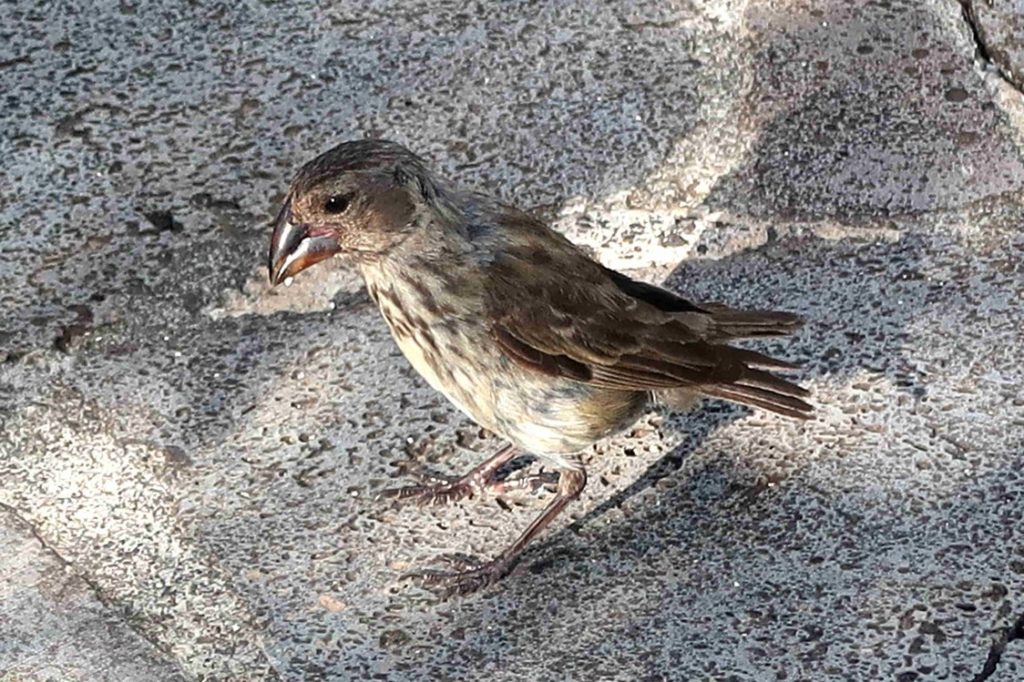
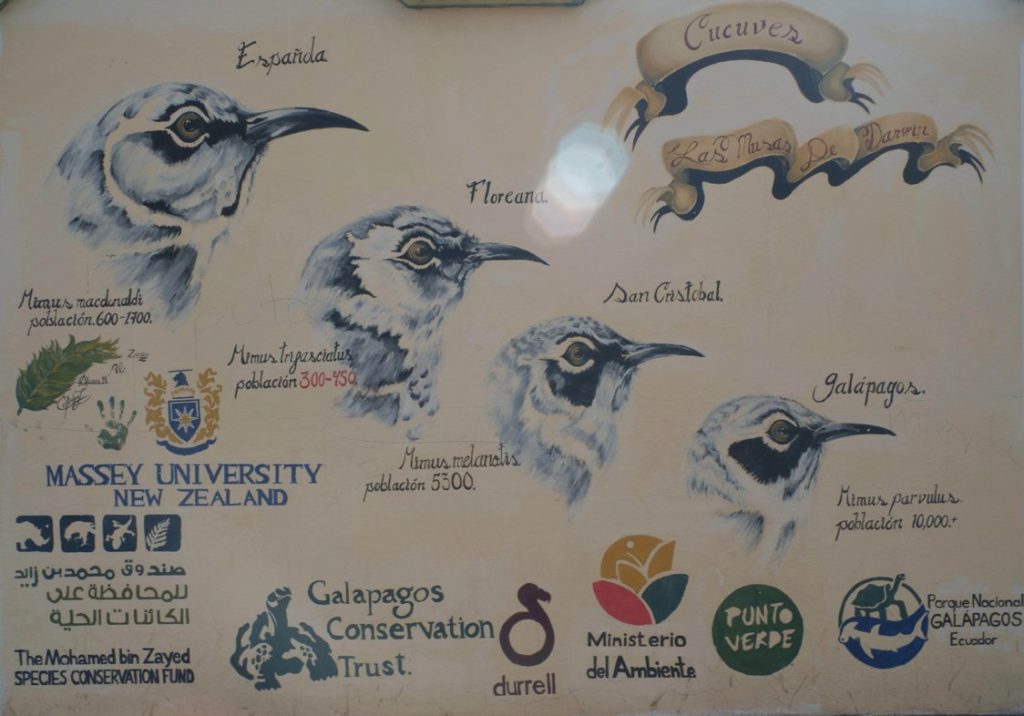
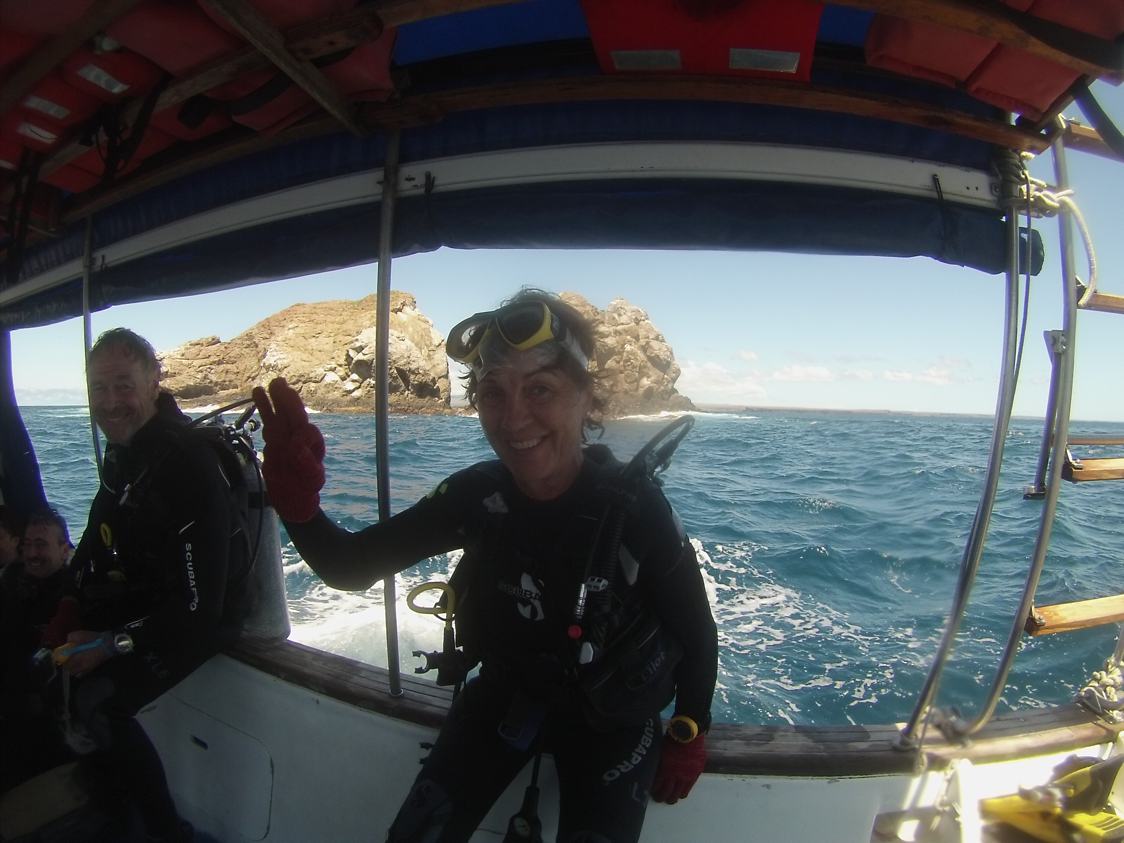
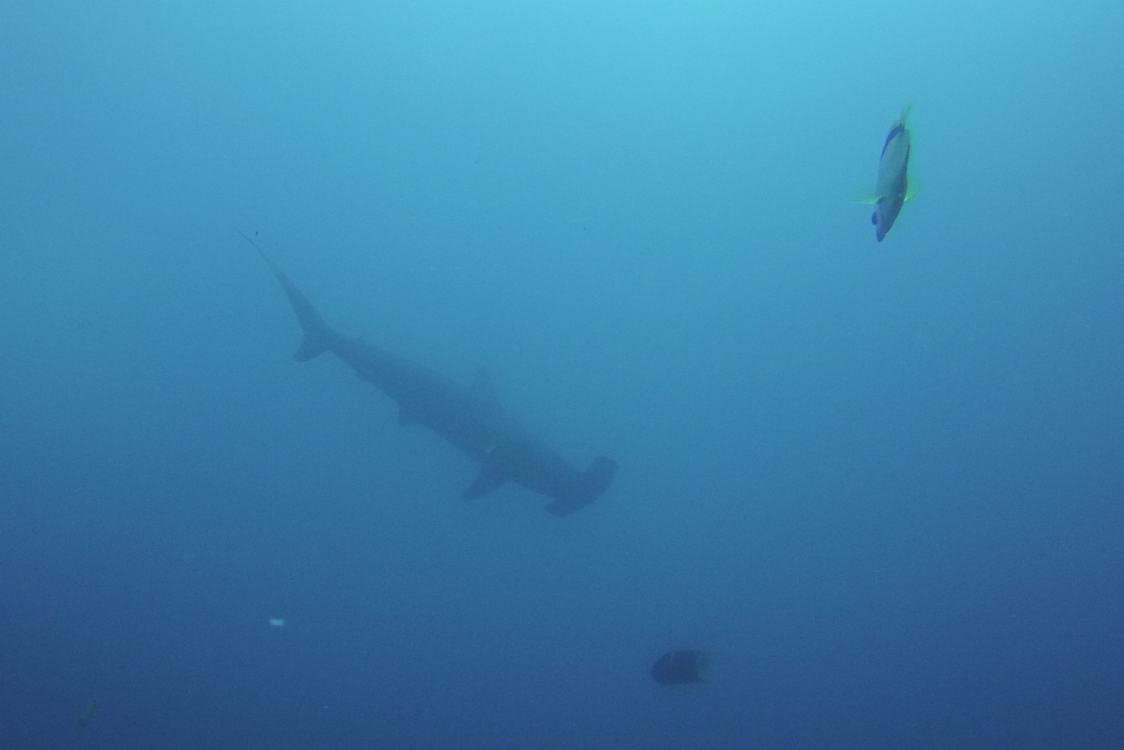
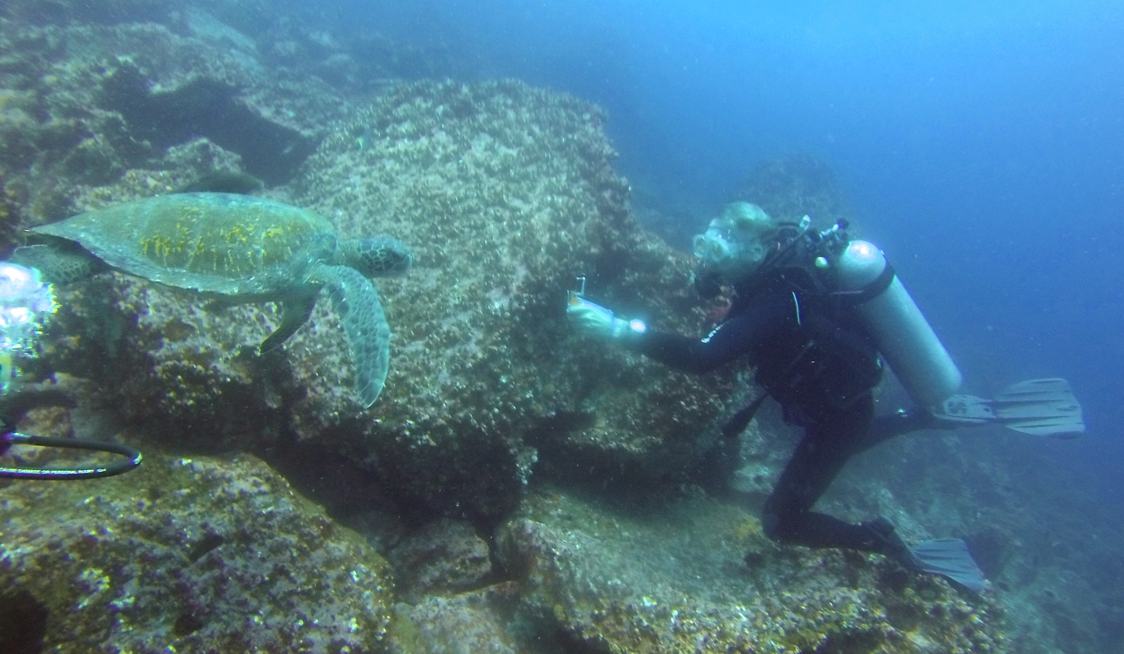
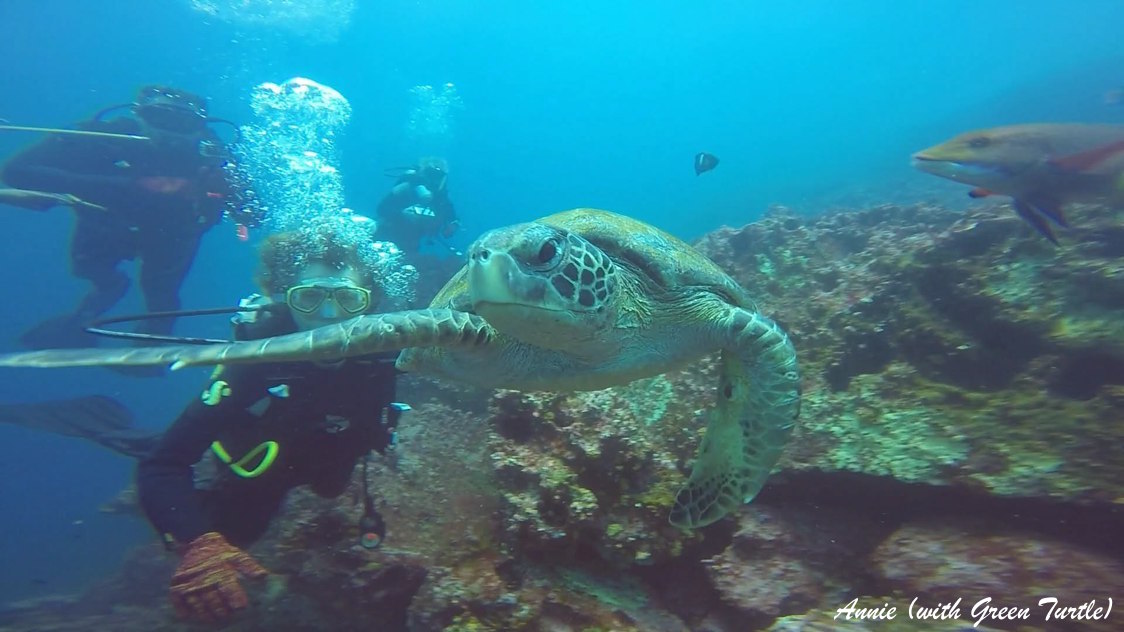
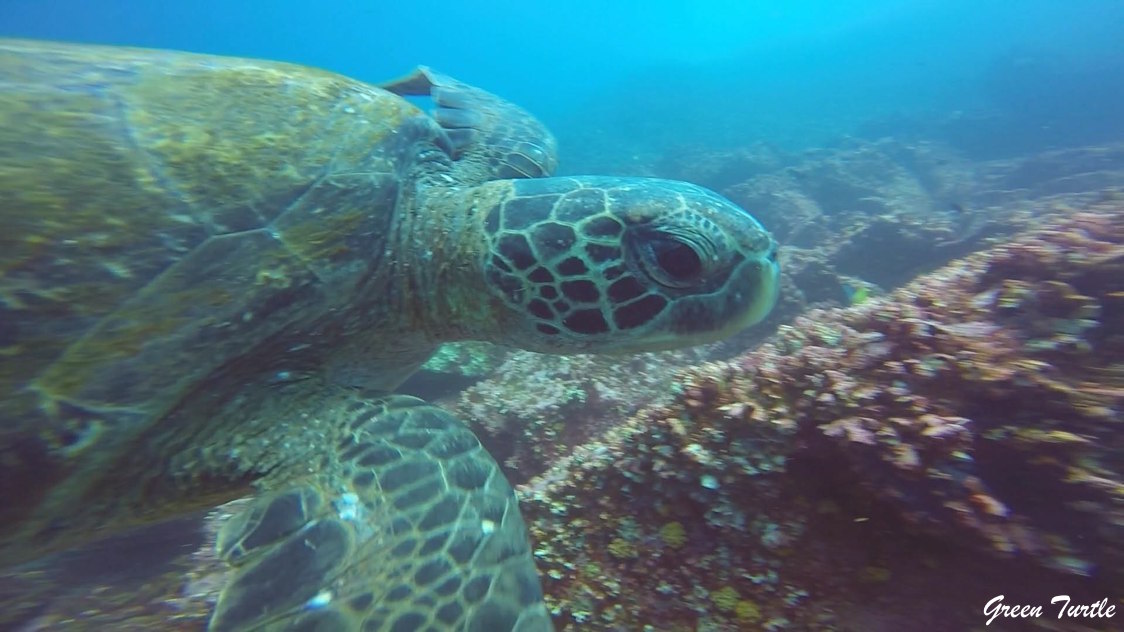
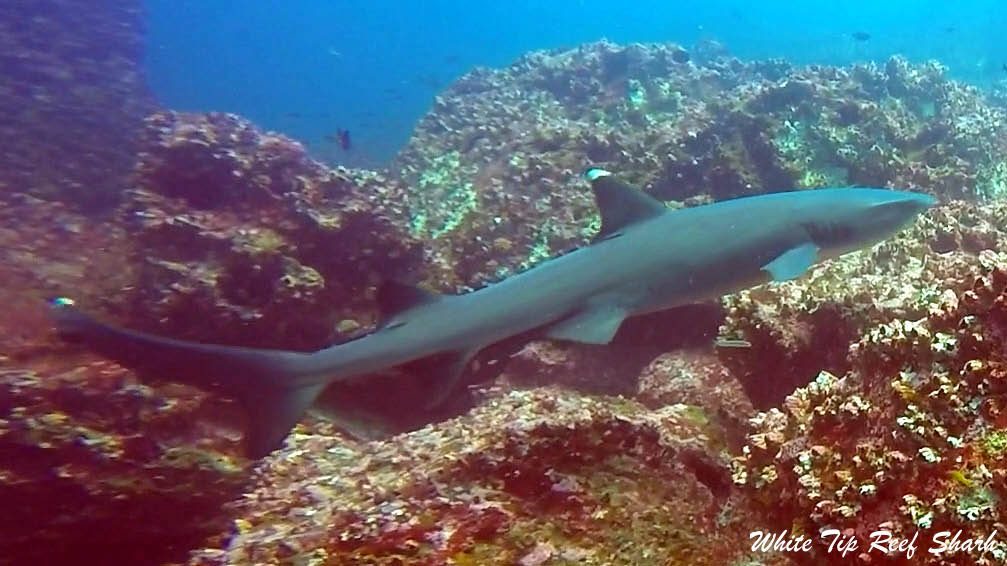
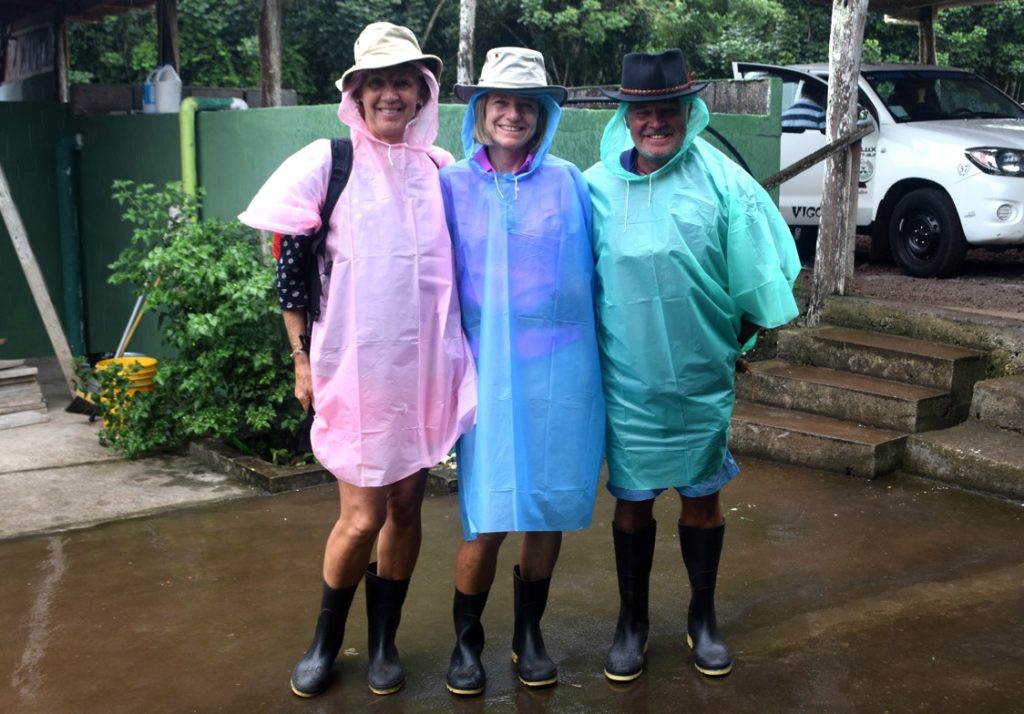
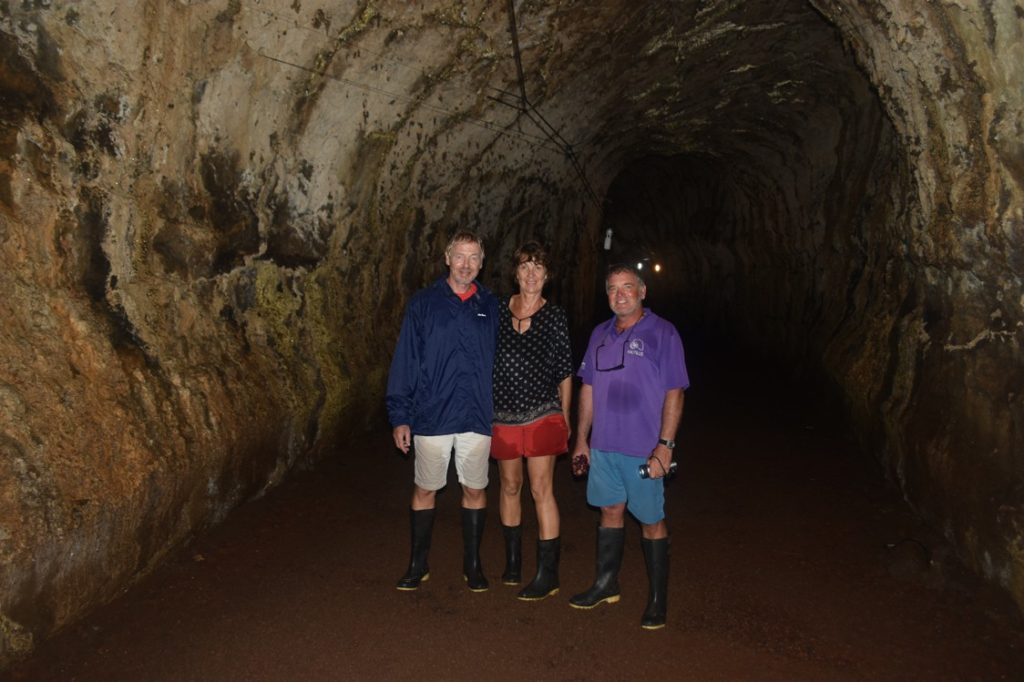
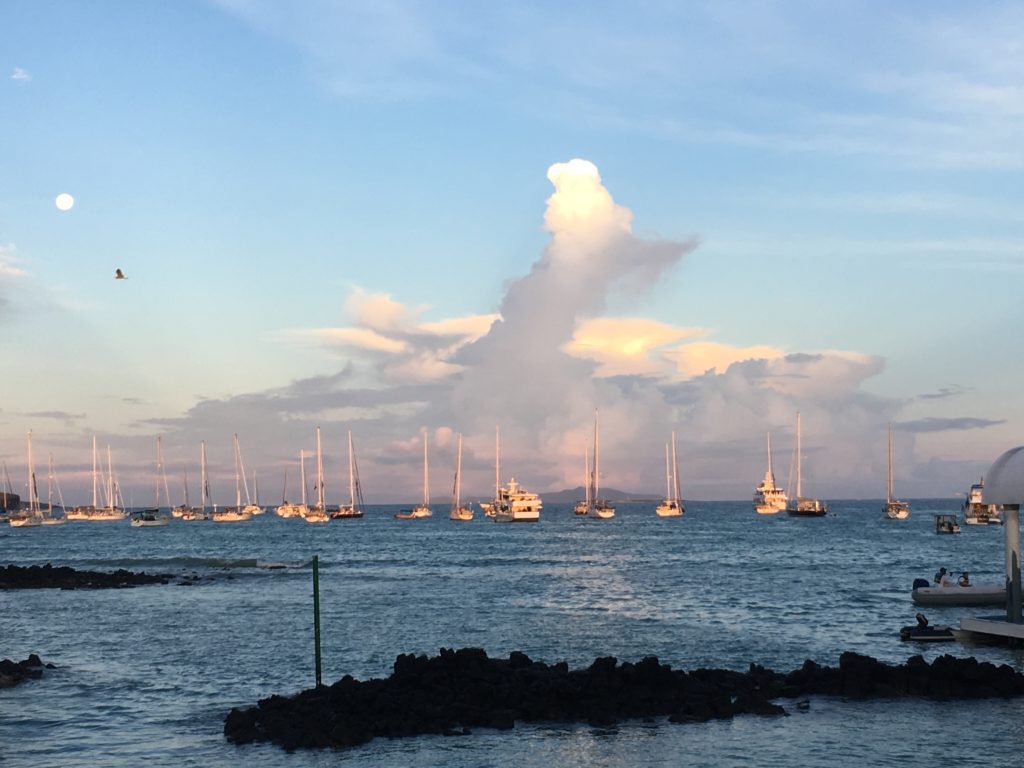
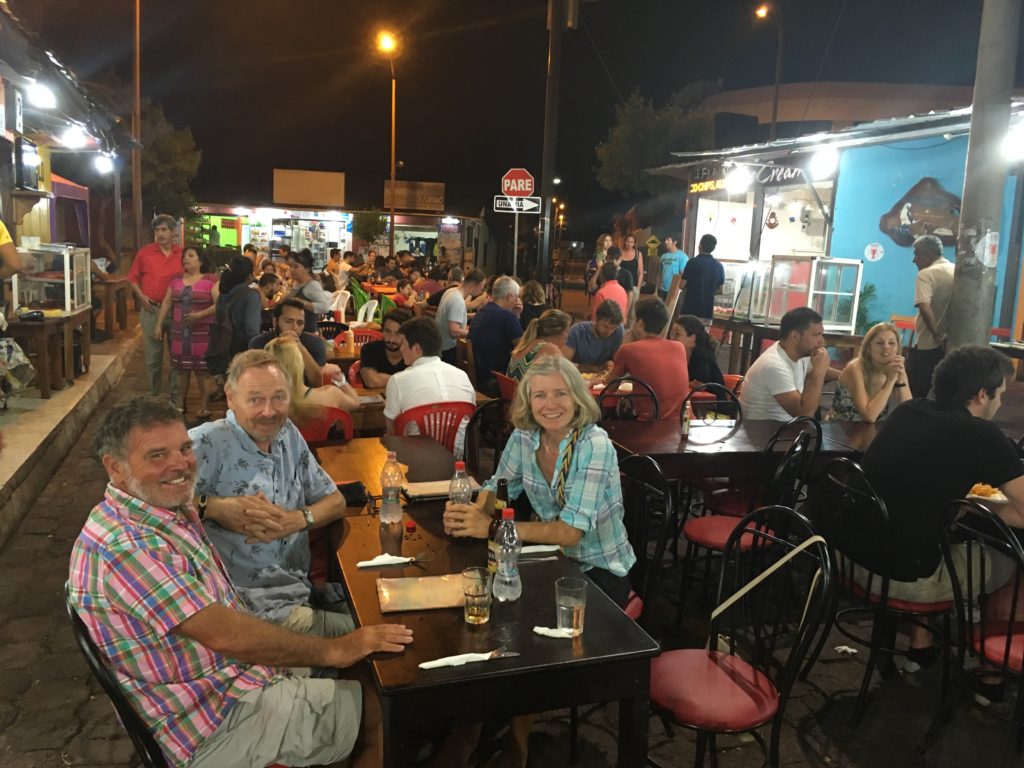
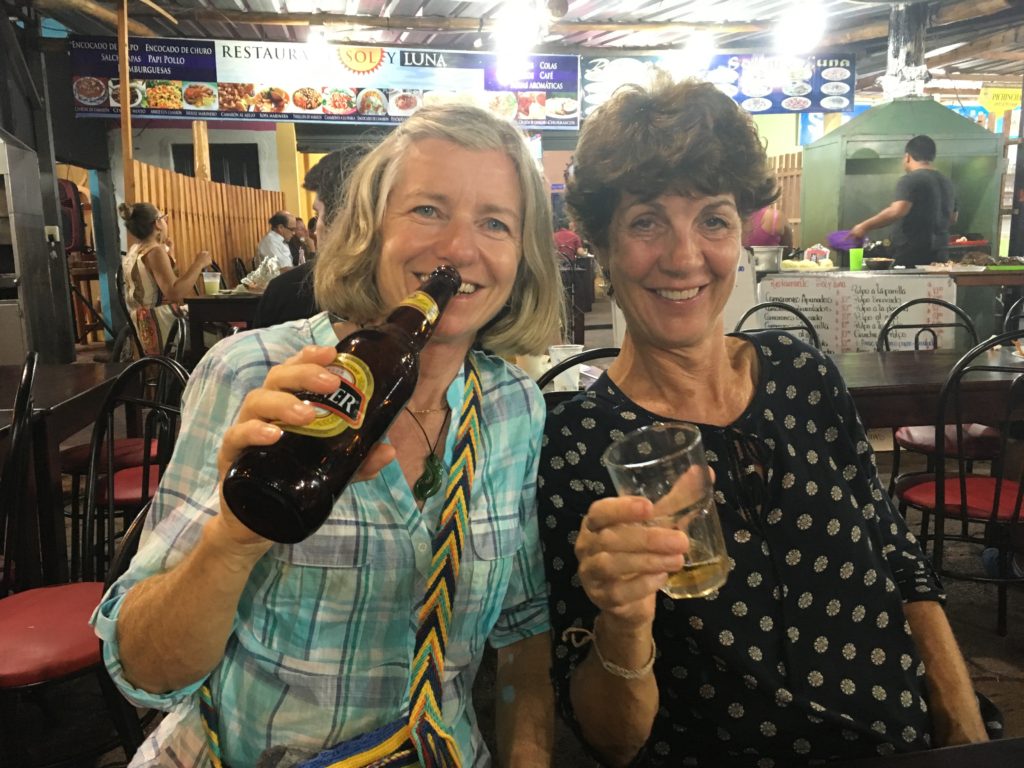
10 Comments
Judy
April 11, 2017 - 8:42 amDear Annie and Hugh
Such wonderful posts from the Galapagos! So delighted to see you so happy and with good friends as company and it’s probably the closest I will get to being there! ? Not missing you as plenty to read on the blogs! Looking forward to seeing you on your next pitstop home xxx
annie
April 17, 2017 - 11:21 pmThanks Jude…. but is the real reason that you’re not missing us is that you are too busy swanning around South Africa??! xxx
Sue
April 11, 2017 - 10:43 amI have particularly enjoyed the photos and posts from this section of your voyage. I watched your dive video and loved the way the turtle came up so close to investigate you both. Thanks for all the pictures. xxx
annie
April 17, 2017 - 11:21 pmThanks Sue. The turtles are absolutely wonderful xxx
Steve
April 12, 2017 - 8:49 pmLooks like the high point of the tour so far. Great blog keep it coming ❤
annie
April 17, 2017 - 11:26 pmYes, the Galápagos are absolutely astonishing and wonderful. You must visit xxx
Jim
April 13, 2017 - 5:29 pmGreat blog and pictures Annie – although if Darwin had come across Hugh he might have revised his theory on evolution – there’s just no helping some species!
annie
April 17, 2017 - 11:28 pmThough I had thought you were particularly closely related to Hugh? And of course he was my selection… unnatural as you may consider it ?
Alieu
April 21, 2017 - 10:06 amKunta,
Very interested voyage ??
annie
May 26, 2017 - 1:00 amThanks Alieu!